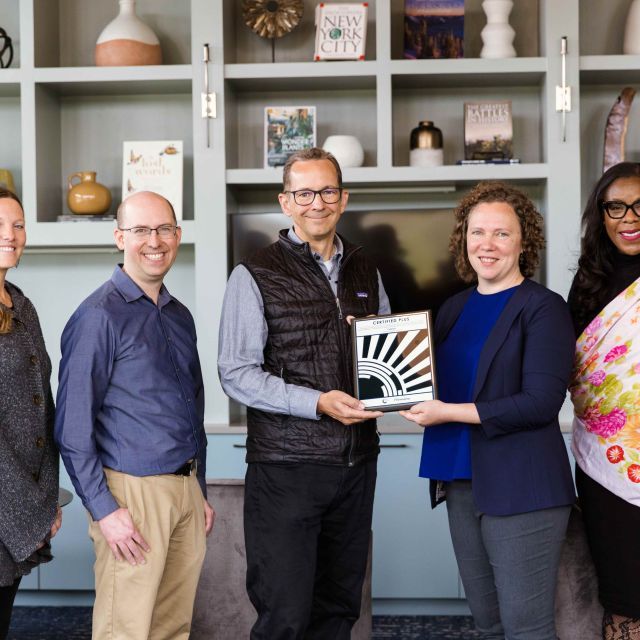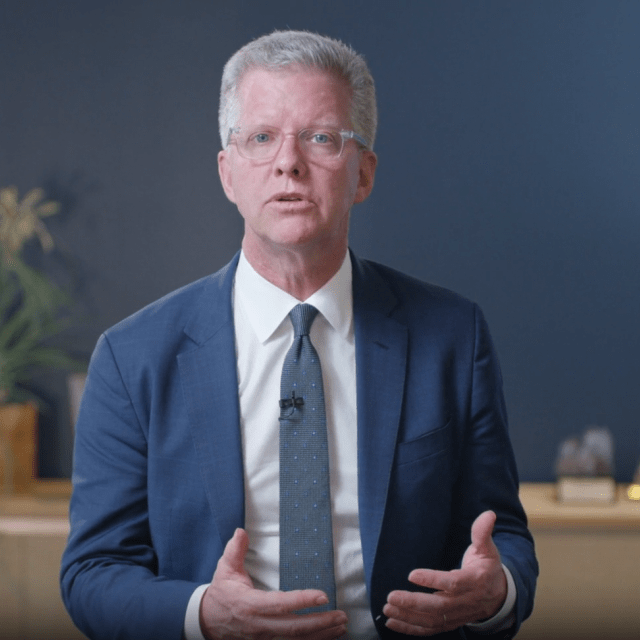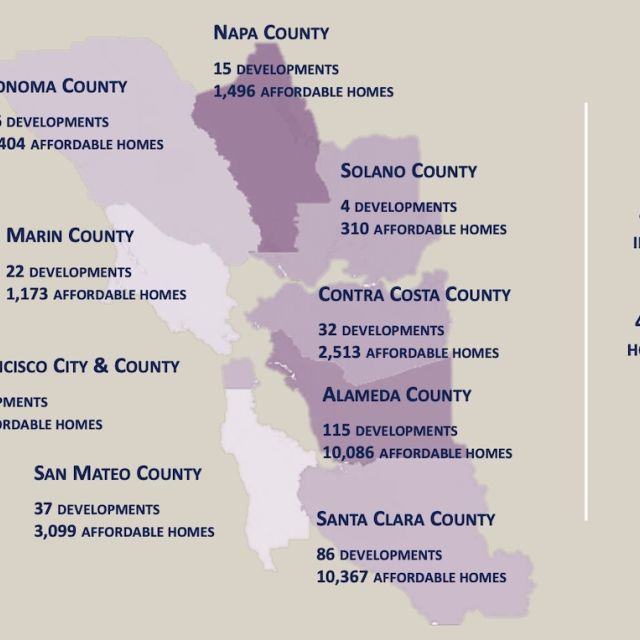This piece is part of our series, Policy Actions for Racial Equity (PARE), which explores the many ways housing policies contribute to racial disparities in our country.
Last year was the hottest year on record, and 2024 has a one-in-three chance of being even hotter. As temperatures increase and climate change worsens, extreme heat events will occur with more frequency and intensity, having an outsized impact in dense, urban areas. Urban neighborhoods face increased temperatures due to building concentrations and a lack of green space, creating a phenomenon referred to as the urban heat island effect.
Neighborhoods with a high number of low-income residents of color experience more intense heat island effects. This is not by chance, but is a result of deliberate, discriminatory housing policies that have impacted people of color, pushing them into vulnerable neighborhoods prone to extreme heat exacerbated by climate change.
Extreme Heat Occurrence and Impacts
A study of 108 U.S. urban areas found that formerly redlined neighborhoods are on average 4.5°F hotter than non-redlined neighborhoods. Redlining is a historic, discriminatory practice that involved lending institutions denying investment to neighborhoods primarily based on their racial or ethnic makeup, perpetuating economic disparities. Today, non-redlined neighborhoods tend to be cooler in times of extreme heat because they have denser tree canopies that help keep the area cool and protected from the sun, as well as less pavement and more green space. These disparities reflect decades of disinvestment and the disproportionate climate impacts in underserved communities.

Extreme heat poses significant health risks to vulnerable populations including older adults, younger children, and individuals with pre-existing health conditions. During heat waves, urban heat islands intensify already heightened temperatures, amplifying the health risks. Heat-related illnesses – including respiratory difficulties, heat cramps, heat exhaustion, and non-fatal heat stroke – become more prevalent with prolonged exposure to such extreme conditions. The prevalence of these heat-related illnesses has led to an increase in heat-related mortality, making heat waves the deadliest weather-related hazard in the U.S.
Reducing Extreme Heat with Enterprise Green Communities
Investing in climate-ready housing strategies can mitigate these risks. Enterprise Green Communities, a certification program created by and for affordable housers, offers cost-effective measures for developers to build sustainable, resilient, healthy, and efficient homes. By certifying to Green Communities, developers implement strategies that mitigate urban heat island effects and create homes more resistant to the impacts of a warming climate, protecting both residents and properties.
As climate change leads to more frequent and prolonged heat waves, demand for air conditioning to cool buildings will increase. This can strain the power grid, leading to brownouts and power outages putting residents without access to cool, habitable homes during extreme heat events at risk for heat-related illnesses and even death.
The Green Communities criteria provides a design path for passive survivability, a tactic to enable buildings to maintain habitable temperature conditions during extended power losses. Strategies include improving the performance of the building envelope by reducing air leakage and thermal bridges, as well as increasing the insulation. Such strategies can also reduce the overall energy load of the building and lessen cooling demand when the power is on, which also lowers associated greenhouse gas emissions when powered by non-renewable energy sources. Furthermore, the criteria encourage buildings to provide adequate emergency power systems that supply critical power to the building when the grid fails (Criterion 5.10), furthering a building’s ability to remain livable during extended power outages.
Green Communities’ promotion of environmentally responsible materials (Criterion 6.5) also contributes to passive survivability performance. By using light colored, highly reflective roofing and paving materials that have a higher solar reflectance index (SRI), more heat from the sun is reflected without warming the air, thereby reducing the heat island effect. Selection of thoughtfully produced roofing and paving products enhances resilience by reducing heating of buildings in the event of power outages when air conditioning cannot operate.
Project teams certifying to Green Communities are also encouraged to set aside permanent, open, and accessible green space (Criterion 2.6/2.7), offsetting increased temperatures that occur in densely paved neighborhoods. Open green space and tree canopy can help mitigate heat island effects by deflecting radiation from the sun, providing shade, and releasing moisture into the atmosphere, generating a cooling effect in the area and providing outdoor respite for residents.
Green Building as a Racial Equity Strategy
Initiatives like Green Communities provide a roadmap for creating climate-ready housing to help mitigate the intersection of discriminatory housing policies, climate change, and extreme heat. By implementing strategies to combat urban heat island effect and enhance passive survivability, we are creating more equitable and resilient communities.
For more information or to get started on your own certification, visit our Green Communities portal or reach out to us at certification@enterprisecommunity.org. For more on how Green Communities can build resilience in formerly redlined communities, read our previous blog on this topic.
Additionally, HUD has recently published an Extreme Heat Quick Guide to help you address extreme heat in your community.
We encourage all who believe in the need to create a just society to read, discuss, and share the PARE blog series as we learn and act to address the impacts of housing policies on racial equity in America. We also invite you to join us in this conversation, by suggesting additional topics and sharing resources for how we can advocate for greater racial equity. If you’d like to offer feedback on our body of work, please reach out to the Public Policy team. You can also subscribe to our daily and bi-weekly policy newsletters for more information on Enterprise’s federal, state, and local policy advocacy and racial equity work.



